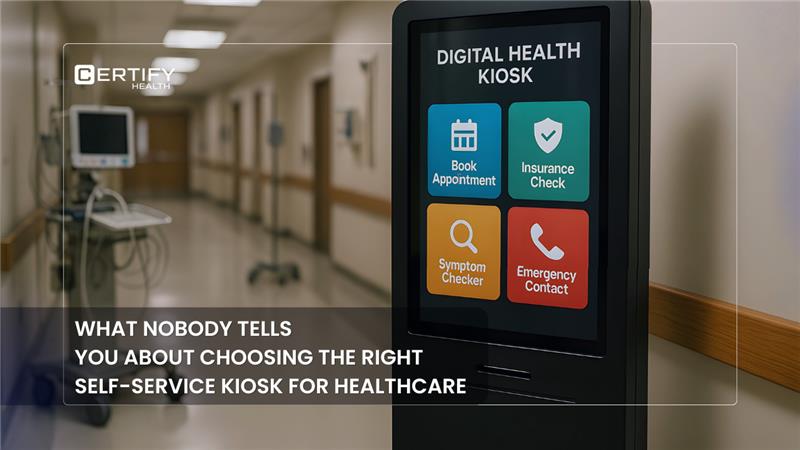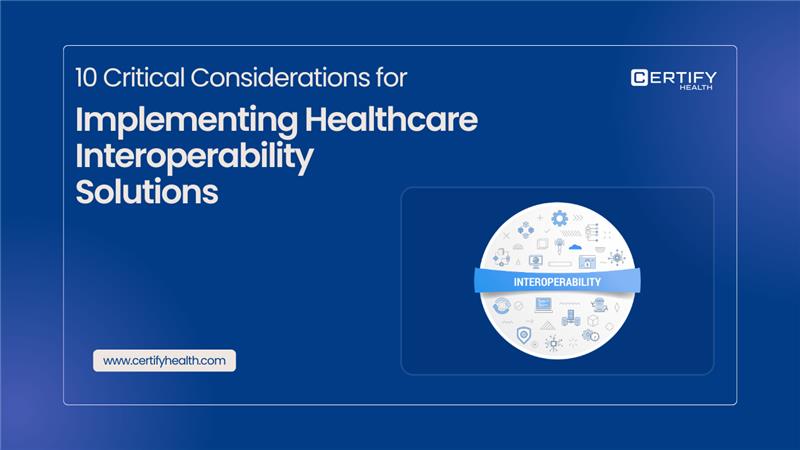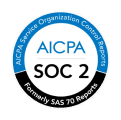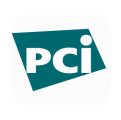Table of Contents
Introduction
Picture this: You explain the complete treatment plan… and the patient never returns. If you’re a dental professional, you’ve likely seen this happen often—patients walking away from needed care, usually because of one unspoken barrier: cost.
Here’s the reality that’s quietly devastating dental practices everywhere: dental patient financing isn’t just a “nice-to-have” service – it’s becoming the critical missing link between your expert clinical recommendations and actual practice profitability. When patients can’t afford treatment today, minor issues transform into complex, expensive emergencies tomorrow, creating a vicious cycle that hurts both patient’s health and your bottom line.
However, what if this cycle could be broken? What if the solution to declining treatment acceptance rates, unpredictable cash flow, and frustrated teams was simpler than you think?
Did you know?
As per a study, nearly 6 in 10 people think dental care is too expensive—and that’s why 92% would delay even routine checkups. Shockingly, 83% hesitate to get emergency care. Cost shouldn’t come before care, right?
The Impact of Treatment Delays on Dental Practices

Direct Revenue Losses
TL; DR – How Do Treatment Delays Impact Your Practice’s Revenue?
When patients decline or postpone treatment, your practice loses more than just a single procedure—
- Increased Treatment cost: Delays worsen patient condition, resulting in costly treatments later.
- Reduced Revenue: Skipped treatments snowball into emergencies that are harder to schedule, less profitable, and more likely to send patients elsewhere.
Without accessible payment options, cost remains a silent barrier—and your practice pays the price for missed revenue and retention.
When patients delay or refuse treatment recommendations, you are not just losing today’s procedure fee. You are losing the compounding effect of comprehensive care that builds patient relationships and generates consistent monthly revenue goals.
Think about it: that simple filling that gets postponed because of cost concerns? It becomes a crown six months later, then potentially a root canal and crown, and eventually might require extraction and replacement.
But here’s the kicker – by the time it reaches the emergency stage, many patients either go elsewhere, delay again, or opt for the most affordable—yet most damaging—solution: extraction over restoration. This not only results in revenue loss from more complex care but also contributes to patient attrition and declining lifetime value.
The snowball effect of postponed treatments creates what industry experts call “emergency-driven care.“ Instead of building relationships through planned, comprehensive treatment, practices find themselves reactive, dealing with urgent situations that disrupt scheduling and reduce overall practice profitability.
Did you know?
As per a study, half of U.S. adults have no dental insurance—and 37 million seniors are left uncovered, and even if they have dental insurance, Medicare doesn’t cover dental care. That is a significant obstacle to treatment acceptance and a lost revenue. Flexible financing can help bridge the gap.
Operational Disruptions
TL; DR – How Do Treatment Delays Impact Your Practice’s Operations?
Dental patients delaying treatment impact your practice operations in several ways:
- Resource underutilization: Last-minute cancellations leave a gap in patient scheduling and wasted resources, and lost revenue.
- Low Staff Morale: Constant treatment refusals discourage staff, making them hesitant or rushed when presenting future plans.
- Operational Disruptions: Dental assistants, hygienists, and front desk staff waste time prepping, identifying, or rescheduling treatments that never happen.
Last minute cancellations and treatment refusals create more than just scheduling headaches – they create costly gaps that represent pure resource underutilization. Every empty chair during prime hours equals lost revenue that can’t be recovered, while your fixed overhead costs continue regardless.
The productivity challenge extends beyond the obvious scheduling issues. When team members repeatedly present treatment plans only to face rejection after rejection, it creates a frustration cycle that impacts morale and presentation enthusiasm. Your staff starts dreading financial conversations, leading to rushed or avoided treatment presentations that actually decrease acceptance rates further.
Here’s what many practice owners don’t realize: operational disruption from treatment delays affects your entire team’s efficiency. Dental assistants prepare for procedures that don’t happen, hygienists identify issues that go untreated, and front desk staff spend valuable time rescheduling and following up on incomplete treatment plans.
Long-term Business Consequences
TL; DR – How Do Treatment Delays Impact the Future Growth and Profitability of a Practice?
Here’s how treatment delays impact practice profitability and growth:
- Patients Stop Returning: Cost barriers drive long-term attrition and loyalty loss.
- Revenue Slips Away: Lost patients mean lost lifetime value and fewer referrals.
- You Lose to Competitors: No financing = missed opportunities as patients shop around.
- Reputation Takes a Hit: Perceived as unaffordable, your practice risks becoming less trusted and less chosen.
The patient attrition rate tells a story that goes beyond individual treatment refusals. When patients can’t afford recommended care, they often disappear entirely, leading to patient retention problems that compound over time. These lost patients don’t just represent immediate revenue loss – they represent lost patient lifetime value and missed referral opportunities.
Without accessible payment options, practices face a significant competitive disadvantage. Patients increasingly research financing options online before choosing their dental provider, and practices without flexible payment solutions lose market share to those offering dental patient financing.
The reputation impact is equally concerning. When cost becomes the primary barrier to care, practices develop a perception problem in their community – they are seen as expensive or inaccessible, which directly impacts practice’s growth potential due to lost reputation.
The Psychology Behind Treatment Avoidance
TL; DR – Why Do Patients Delay Dental Treatments?
Patients delay dental treatment due to a mix of emotional, psychological, and financial triggers.
- 92% delay care due to upfront costs: High out-of-pocket expenses remain the top barrier to timely treatment.
- 75% fear pain or complex procedures: Anxiety about discomfort or extensive care keeps patients from scheduling.
- Oral health often takes a backseat: Many patients de-prioritize dental care in favor of general health needs.
The result? Delays worsen dental conditions, increase future treatment costs, and negatively affect overall health outcomes.
Understanding Patient Decision-Making

Financial anxiety isn’t just about not having enough money – it’s about the psychological triggers that activate when patients face unexpected dental costs. Even patients with adequate savings experience decision paralysis when confronted with treatment estimates, especially for comprehensive care plans.
The concept of future discounting explains why patients consistently choose to delay treatment even when they understand the long-term consequences. The immediate financial burden feels more real and pressing than potential future problems, leading to treatment postponement that ultimately costs more.
Cost concerns often override logical health priorities because dental treatment represents what behavioral economists call a “loss frame” – patients focus on what they are giving up (money) rather than what they are gaining (health). This psychological bias makes patient decision making predictably irrational when it comes to dental care.
The Practice Perspective

Communication breakdowns happen when teams feel caught between clinical recommendations and business realities. How do you maintain clinical integrity while acknowledging that patients have legitimate financial constraints? This tension creates uncomfortable conversations that often end with incomplete treatment planning.
As discussed, earlier treatment presentation becomes exponentially more difficult when the cost is the elephant in the room. Teams find themselves rushing through treatment options or, worse, pre-qualifying patients based on assumptions about their financial capacity, leading to reduced comprehensive care delivery.
The team’s frustration continues to feed on itself. As acceptance rates decline, team members lose confidence in their presentation skills, leading to less enthusiastic about case presentations, which further reduces acceptance rates. Without dental patient financing options, this cycle will continue indefinitely.
Current Industry Acceptance Rates: The Practice Reality
The Acceptance Gap

The disparity between treatment recommendations and actual completion reveals a concerning industry acceptance crisis. While preventive care maintains high acceptance rates, comprehensive care plans face significant rejection rates, especially treatments exceeding certain cost thresholds.
High-value treatment vulnerability is particularly pronounced for procedures that patients view as “elective” rather than emergency-driven. Cosmetic procedures, extensive restorative work, and comprehensive periodontal therapy often face the highest refusal rates, directly impacting practice profitability.
The follow-up protocol failure represents missed revenue opportunities. Many practices lack systematic approaches for reconnecting with patients who initially declined treatment, allowing potential cases to disappear entirely rather than converting them through patient education and financing options.
Did you know?
According to research, approximately 25–35% of new dental patients agree to treatment programs. Even with loyal patients, acceptance tops out at just 60%. That’s a lot of care left on the table.
Providing your patients with flexible financing options can be the decisive factor they need to accept treatment.
Revenue Impact Analysis

TL; DR – What are the disadvantages of traditional financing plans?
The Limitations of Traditional Financing Plans
- Rigid interest rates often deter patients
- Applications are lengthy and require credit checks
- Not all patients qualify, especially those with limited credit
- Hidden fees, unclear terms, or penalties lead to confusions
- Many plans don’t adapt to individual patient needs or treatment type
The result? More abandoned treatments and strained provider-patient relationships.
Treatment delays create growth trajectory limitations that extend far beyond individual cases. Practices without comprehensive financing options find themselves constrained to basic, insurance-covered procedures, limiting their ability to deliver optimal care and achieve their full revenue potential
The hidden costs of managing partial treatments internally create an accounts receivable burden that many practices underestimate. Chasing payments, managing payment plans, and dealing with delinquent accounts consume administrative resources that could be better utilized for patient care.
Cash flow instability resulting from treatment delays creates unpredictable revenue patterns that complicate business planning and growth initiatives. Without consistent treatment acceptance, practices struggle to forecast medical practice income and make strategic investments.
Dental Patient Financing: The Strategic Solution

Financing Models for Practice Growth
Installment plans transform large treatment costs into manageable monthly payments, dramatically improving patient acceptance of necessary care. These structured payment options convert hesitant patients into accepting cases by removing the immediate financial barrier.
Credit-based solutions offer revolving credit lines that benefit both patients and practice cash flow. Patients can access care immediately while practices receive prompt payment, eliminating the financial uncertainty.
Third-party partnerships with established financing companies provide the optimal solution for most practices. External financing companies manage patient payments and credit risk while practices receive immediate compensation, combining the benefits of upfront payment with professional financial management.
Practice-Centered Advantages
TL; DR – What are the Advantages of Dental Patient Financing?
- Higher Case Acceptance: Financing removes cost barriers, leading to more complete treatment plan approvals.
- Better Patient Outcomes: Patients commit to full care, resulting in healthier smiles and better clinical results.
- Stronger Patient Retention: Affordable care improves satisfaction, loyalty, and returns.
- Increased Referrals: Happy, financially supported patients are more likely to recommend your practice.
Enhanced cash flow stability represents one of the most significant benefits of dental patient financing. Instead of uncertain future payments or lengthy collection processes, practices receive predictable, immediate revenue that supports consistent business operations.
The correlation between payment options and comprehensive care delivery is substantial. When financing removes cost barriers, patients are more likely to accept complete treatment plans rather than partial care, leading to better clinical outcomes and higher per-patient revenue.
Patient retention improves dramatically when practices offer accessible financing options. Patients who can afford recommended care are more satisfied with their experience, more likely to maintain regular visits, and more inclined to refer friends and family.
Implementation Strategies for Successful Dental Patient Financing
Team Integration Protocols
Successful team integration requires comprehensive training that builds confidence in financial conversations. Staff members need scripted approaches for introducing financing options naturally within treatment presentations, ensuring that presentation timing supports rather than undermines clinical discussions.
Objection management training equips team members to address common financing concerns effectively. Rather than viewing patient questions as resistance, trained staff can guide patients through decision-making processes that lead to treatment acceptance.
The key to successful implementation strategy lies in making financing discussions routine rather than exceptional. When every patient learns about available payment options regardless of their perceived financial capacity, acceptance rates improve across all demographic groups.
Process Optimization
To prevent adding to the administrative load, make use of financing technologies that easily interact with current processes. Modern financing platforms offer digital applications for loans, Buy Now Pay Later (BNPL), or installment plan that patients can complete independently, reducing staff time while maintaining professional oversight.
Technology integration with practice management software ensures that financing options complement rather than complicate the existing patient management process. The best solution integrates and sync with established dental software, creating unified patient records and streamlined billing.
Consistent follow-up protocols for financing-dependent treatment acceptance require systematic approaches. Practices need advanced systems like marketing automation software like CERTIFY Health to reconnect with patients who are considering financed treatment, ensuring that interested patients don’t fall through administrative cracks.
Measuring Success: Key Performance Indicators
Practice Health Metrics
Treatment acceptance rate improvements provide the clearest indicator of financing program success. Practices should track acceptance rates before and after implementing dental patient financing, paying particular attention to high-value treatment acceptance.
Comprehensive care delivery versus fragmented treatment offers insight into financing impact on clinical outcomes. Successful financing programs enable complete treatment plan acceptance rather than patients choosing only the most urgent procedures.
Health metrics should include average treatment value per patient, which typically increases when financing removes cost barriers to comprehensive care. This metric reflects both improved patient care and enhanced practice profitability.
Financial Performance Indicators
Track patient collection metrics to analyze financial performance of your practice:
Revenue growth trajectory analysis should examine monthly and quarterly income patterns following financing implementation. Successful programs typically show both immediate acceptance rate improvements and sustained revenue growth over time.
Accounts receivable reduction measures the administrative efficiency gains from third-party financing. When financing companies handle patient payments, practices reduce internal collection efforts and improve cash flow predictability.
Tracking patient lifetime value shows the long-term financial gains from patient retention made possible by funding. Patients who receive comprehensive financed care typically maintain longer practice relationships and generate higher total revenue.
Conclusion
The basic gap that exists in modern dental practice between clinical quality and financial accessibility is addressed by dental patient financing. When cost barriers disappear, patients can access recommended care, practices can deliver comprehensive treatment, and teams can focus on clinical outcomes rather than payment concerns.
The future of sustainable dental practice profitability lies in recognizing financing solutions as essential infrastructure rather than optional services. Practices that embrace comprehensive financing strategies position themselves for consistent growth while serving their communities more effectively.
Every day without accessible financing options represents lost opportunities – lost revenue, lost patient relationships, and lost clinical outcomes. Dental patient financing isn’t just about helping patients afford care; it’s about creating the financial foundation that allows practices to thrive while delivering the comprehensive care that patients deserve.
The time for action is now. As a next step, read: Overcoming Challenges in Patient Collections for Dentists and Physicians or Book a Demo to Connect with Our Experts to Help You Explore Dental Patient Financing Solutions.
























